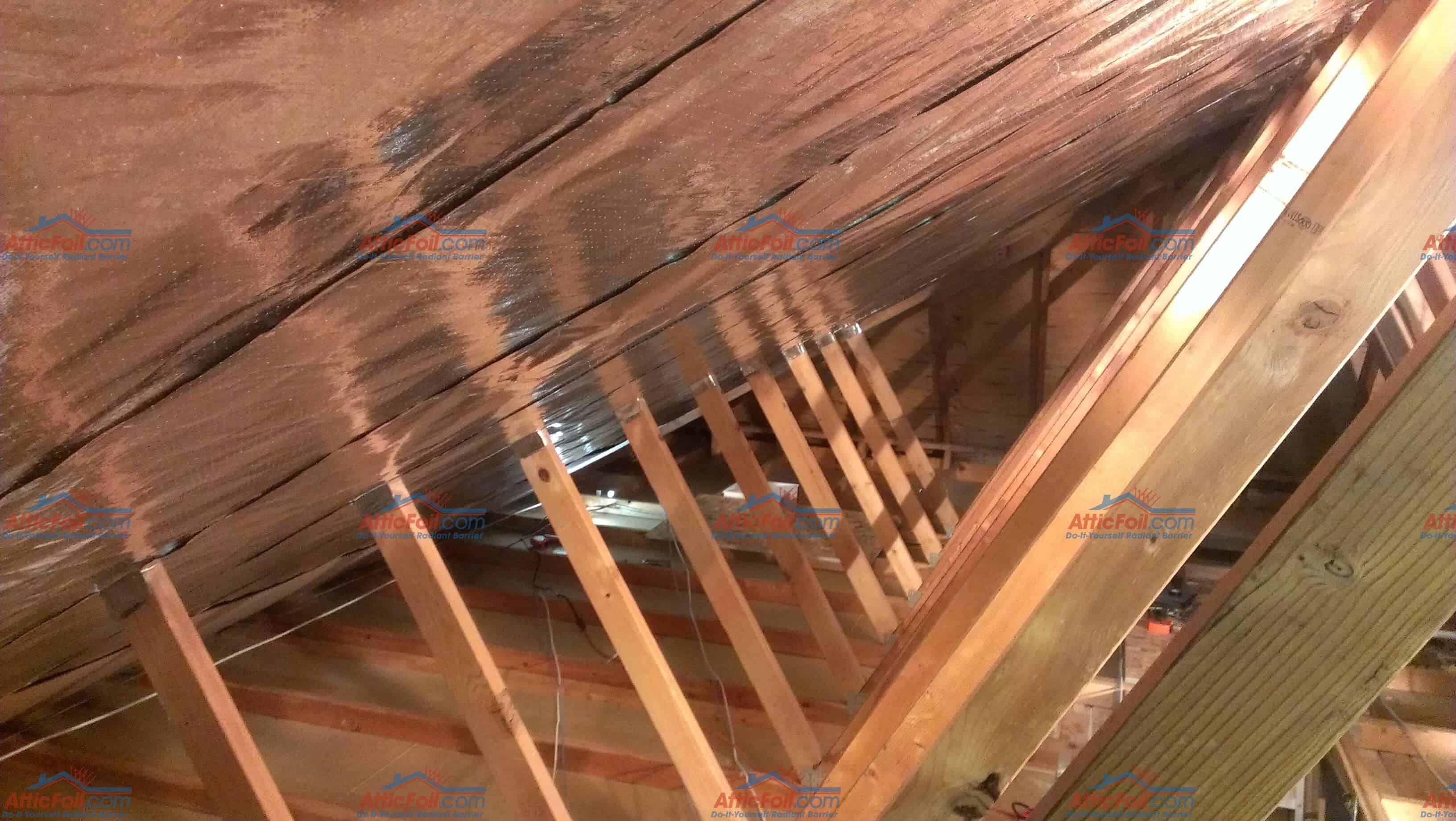

When installing a foil-type radiant barrier, it’s crucial that the material “droops” between the attachment points – allowing for at least a 1 inch (2.5 cm) air space between the material and the bottom of the roof. This involves stapling the reflective material to the bottom of the rafters. In most cases, radiant barriers are installed before the roof sheathing but can it can still be done afterwards from inside of the attic. This helps reduce the accumulation of dust on the reflective surfaces.
#Installing radiant barrier insulation install
Although it’s easier to install radiant barriers into a new home, they can still be incorporated into an existing home, especially in homes with an open attic.įor new homes, the installation is typically done by draping rolled-foil radiant barrier with the foil-face down between the rafters of the roof. Consult the Reflective Insulation Trade Association for more beneficial installation tips.Īs previously mentioned, the effectiveness of radiant barriers solely depends on proper installation – which is why it is recommended to hire a certified installer. You’ll also want to check your local building and fire codes. If you decide to handle the installation yourself, pay close attention to the instructions from the manufacturer. Study and follow the manufacturer’s instructions.Only work when the temperature sin the attic are safe, and limit your foot traffic to joists so you avoid falling through the ceiling.

Oftentimes, they have toxic materials, loose nails, and inconsistent headspace.

In general, unfinished attics can be hazardous places. Since attic insulation is dependent on its thickness for efficacy, flattening out the existing insulation will decrease its resistance value. Compressing existing insulation in your attic while installing radiant barriers will decrease, instead of increase, your cooling costs. Avoid compressing existing insulation.If you’re ever concerned about your safety, we strongly recommend hiring a professional. The reflective foil will conduct electricity, so it is crucial that you avoid making contact with bare electrical wiring. When you’re installing radiant barriers, be especially careful when stapling near junction boxes and electrical wiring. Factoring hospital costs into your budget is not ideal.

#Installing radiant barrier insulation skin
Insulation can cause irritation to the lungs and skin when handled.


 0 kommentar(er)
0 kommentar(er)
